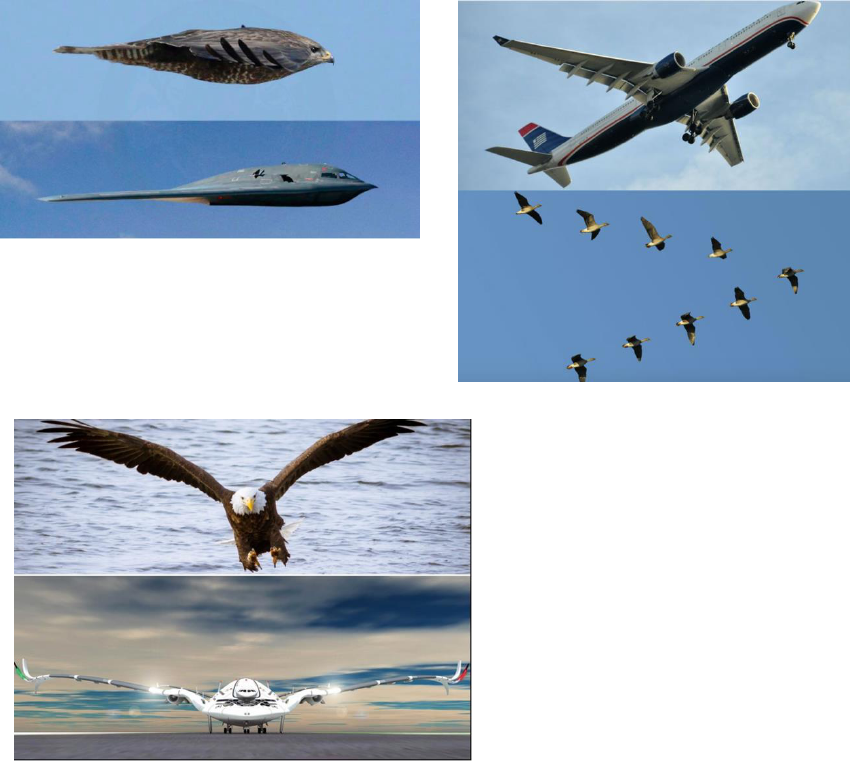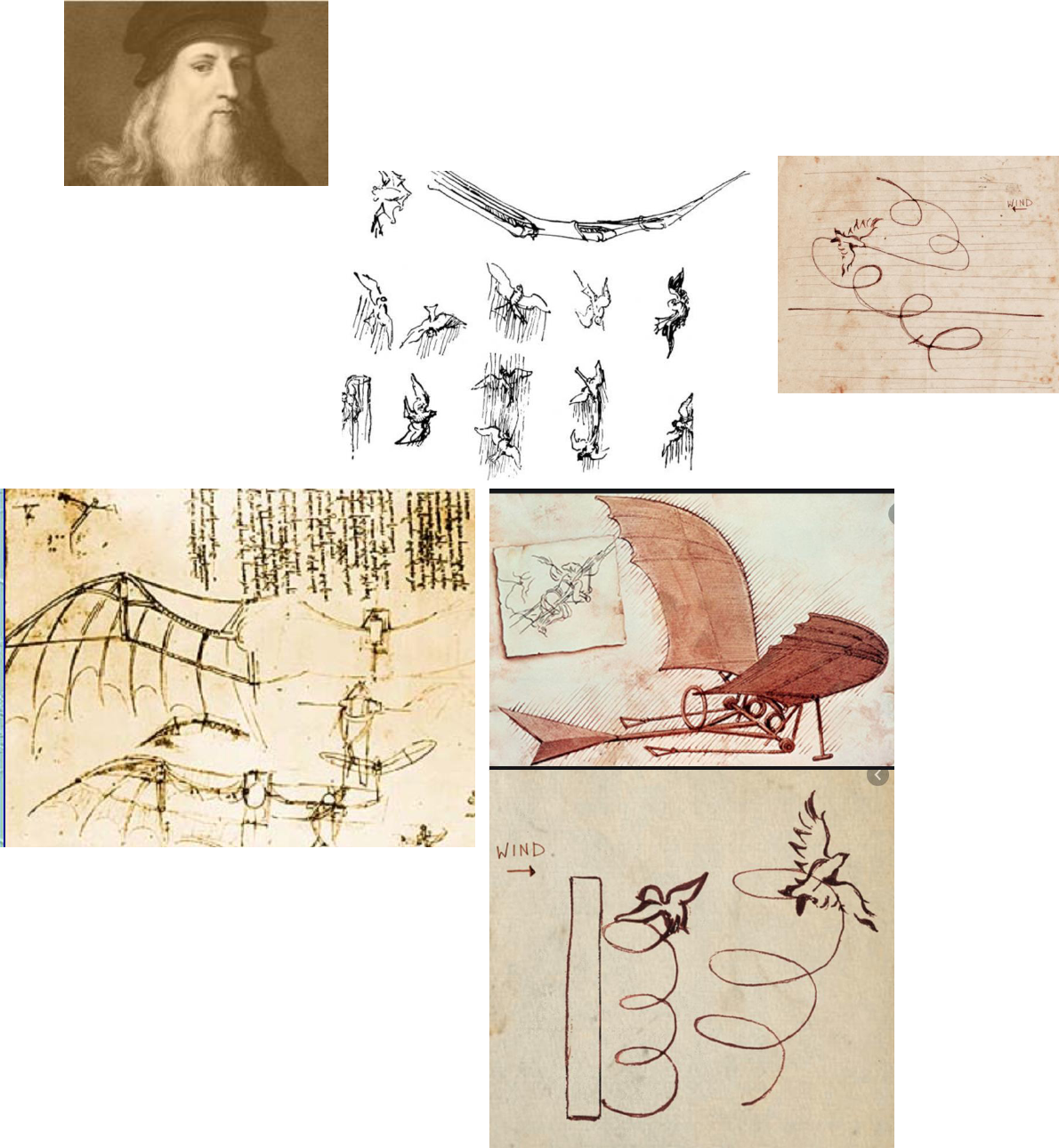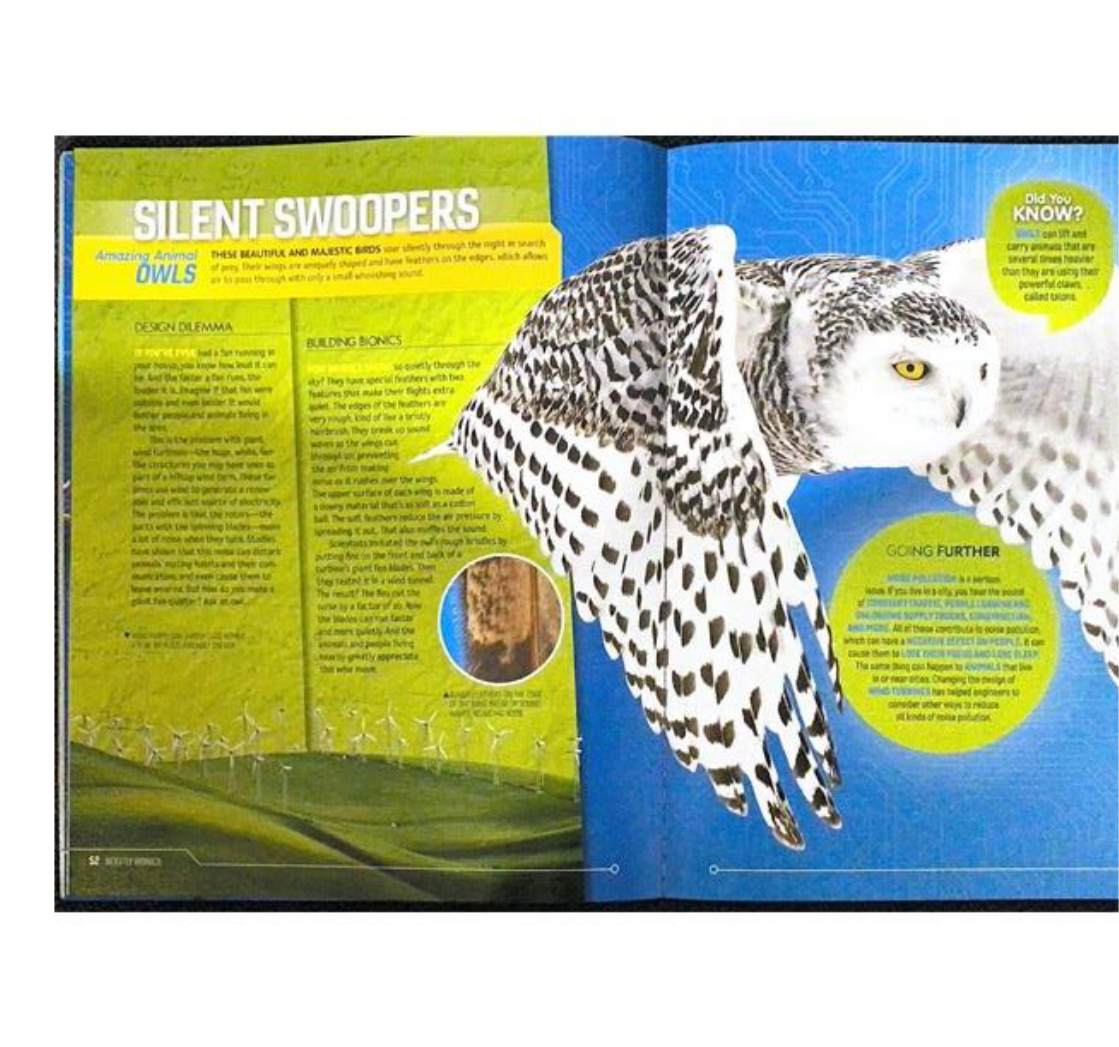
Wider Curriculum: Unit Plan for Home learning
Subject: Science
Unit: Biomimicry and Design in Nature
Year: 5
This unit will be about what we can learn from the 3.8 billion years of design genius in in
nature and how we can use this to be more sustainable and solve problems
Session 1
What can the natural world tell us about design? What is biomimicry?
Make a list of things that you may see that spring has started. Have you seen
any from this list? Or check those in the resources.
Think: How do these plants and animals know what to do and when?
Watch this *film as an introduction to Biomimicry What surprised you? What
questions do you have?
*Note: This is an adult level talk but will make you think in a good way! Do not worry if you do not
understand everything. The scientist Janine Benyus is an amazing world expert.
Tell someone at home something you have learned or thought about today.
Challenge: Choose one of the questions from the video to research more about.
Session 2
What is biomimicry? Why is it important?
Watch this 2 minute summary on what is biomimicry?
Write your own definition of biomimicry in ‘easy to understand’ language.
Imagine you are explaining it to someone in your class who has missed the last 2 lessons
Relisten to the video or research other definitions and improve yours.
Why is biomimicry important? Give 3 clear examples from what you have
learned already. You can use diagrams or photos to explain.
What questions do you have about biomimicry?
Create a list of things this has made you want to know more about.
Challenge: Find out more about Janine Benyus or another scientist, engineer or designer
working in biomimicry and what their main achievement is.
Session 3
How has biomimicry helped improve transport?
Look at the picture in the resource. What do you notice?
Look at shapes of different forms of transport. Are there any connections with
the shape or form of any animals or plants? surf board -
Make connections with your understanding of forces, air resistance and water
resistance. Draw pictures or use photos from internet and note anything you
notice about shapes.
Watch up to 2.05 of this video (you can watch more if you like!) about how a
birdwatcher changed Japanese train problem.
Watch this BBC video which shows it in a different way.
Use labelled diagrams to explain how the kingfisher solved the train problem.
Challenge: Find out and explain how the boxfish inspired Mercedes through biomimicry.
Start here. Would this design or 2005 appeal in 2021?
Session 4
What can we learn from studying how birds fly?
Look at the pictures biomimicry in flight resource. What do you notice?
Human flight is all based on study of birds. Leonardo da Vinci was a genius in
art, science and invention. His observations showed how much he
understood. What do you notice here?
Look at these 3 biomimicry examples how birds are inspiring design and
engineers now to answer: What can we learn from studying how birds fly?
o OWLS – noise reduction: Watch this. Read resource.
o Falcons –Watch this.(video scroll down page) Read resource.
o Geese – flying together Watch this.
Answer the key question using pictures to help your explanation.

You can choose one example in detail or give a short example from different birds.
Challenge: Find out how this research into studying birds is going to mean the flight of
drones can improved.
Session 5
What materials are there in nature to explore?
Start to think like a designer, scientist and engineer with biomimicry ideas. Go
outside (if you can) to look closely at different animals and plants and what
they do and especially what they produce.
You can use knowledge of other animals/plants if you cannot go out.
Think/observe: What is produced by plants or animals or done by them that
could be useful?
eg a way of joining things, attracting attention, defending, use of colour, shape of body
Record at least 5 ideas. You can complete a table (see resource) or present
clearly in a different form if you prefer.
You are thinking about the potential or possibilities of materials/substances in nature.
Every invention has come from close study and observation. Choose an
animal or plant and create a set of observations, questions, notes about what
you see (like Leonardo da Vinci).
Challenge: Investigate the biomimicry potential in spider webs.
Session 6
What are the best sticking solutions in natural world?
You are to compare 2 biomimicry sticking solutions: Velcro and Slug Slime.
1. Velcro:
o Look at the pictures in the resource. What do you notice?
o Have you got Velcro on a bag or shoes? Have you thought about how
it works, if you have some go and have a closer look!
o Check here find out how this plant led to Velcro being invented.
Scroll down to watch the video at the bottom of the page.
2. Slug slime is sticky even on wet surfaces, how could this be useful?
o Read more in the resource or listen to it being read here.
Answer: Which is the most useful sticking solution: Velcro or Slug Slime?
Why? Write or record your explanation using scientific language and
evidence.
Challenge: Why hasn’t the slug slime solution be used straight away in surgery?
Session
7 and 8
What are the best sticking solutions in natural world?
How are geckos such good climbers? How is this useful for design?
Read the pages ‘Geckos Stick anywhere’ below from the book Beastly Bionics
Watch this video Beyond Bionic - Geckos. Could humans ever climb like a
gecko? What other reasons are there for knowing about how they do climb?
Look at the partly finished page in resources. It has some but not all of the
information to answer the key question. Think: What more could you add?
Go back and find information that explains more about why geckos are such
good climbers and how this helps designers solve other problems.
Answer the key question: How do geckos such good climbers? How is this useful for design?
You can either
o finish the resource by writing/drawing in the blank spaces
o create your own infographic poster or page for a Biomimicry book for children on paper or a
digital presentation using Book Creator, Powerpoint or other application
o do a voice over or video talking about chosen images (like Janine Benyus)
o If you prefer the content from last lesson, you could choose to answer the Session 6 question:
What are the best sticking solutions in natural world?
Challenge: Watch David Attenborough’s short video BBC The Wonder of Science.
Which source, explanation or image has been the best to learn from and why?
Session 9
What is the impact of biomimicry?
Choose one of the questions in resources to present on. You can of course

choose a question about biomimicry that is not mentioned. If you want to find
other examples look here. eg How can shark skin help create swimwear to help athletes?
Research your question using the internet. If not possible you can answer the
question using the examples you have from previous lessons.
Make notes, find the key pictures to help you explain the impact of design.
Present your learning in less than 2 minutes as a spoken presentation.
Try it on someone at home and share with your teacher.
Challenge: Is the impact of biomimicry always positive?
Session
10
Are the secrets to a sustainable world really all around us?
Look around your home or school area and create some questions that have
solutions in nature. You can refer to your work in lesson 5 and collect a range
of ideas in the table in resources.
eg How can such a small animal like an ant carry such a large object?
Think of one animal or plant which has a particular skill that makes it successful
and think how that might help designers or scientists answer other problems.
Develop one of your ideas as a how can help designers think of a new way.
Remember to use drawings like Leonardo da Vinci or the diagrams for the Japanese train.
Present your ideas and thoughts in your own way, this could be:
○ a video of the animal/plant explaining what you see and your questions and
design ideas
○ a page from our ‘Beastly Bionics’ book (like Geckos) about your idea
○ a proposal to a company about your animal and how it might help their business
Session
11
What technologies will change our world?
What discoveries or problems do you think scientists and designers should be
working on to change our world for the better?
Scan the titles 22 technology ideas in BBC Science Focus on this website (just
look quickly through the range of ideas first)
Choose 2 to read more closely and watch video linked to the idea if there is
one. Which was the better idea and why?
You are going to review ONE idea from this site.
You can do this in writing, as an audio or video presentation.
What is the main idea? (Summarise)
o How well do you think it will work? (Evaluate)
o How successful do you think it will be?
o What might stop it being a success?
Challenge: Which of the 22 ideas will make the biggest difference to the biggest
number of people? Does that mean it would be the most successful?
Session
12
How could nature shape our future?
What discoveries or problems do you think scientists and designers should be
working on to change our world for the better?
You could consider: environment, buildings, food and farming, medicine, transport, disabilities,
disease, robotics or ….. you decide!
Set a problem or question you would like the scientific community to answer.
What is there in nature than might be worth investigating to help with the
answer? Has anything already begun on this?
If you are not sure or cannot come up with anything there are lots more
amazing examples to explore here.
Answer: What are your hopes for the future of biomimicry?
Challenge: If nature is 3.8 billion years old, why is biomimicry relatively new area?

Session 1

Session 3
Shark – surfboard biomimicry

Session 4 Biomimicry and flight
Resource 1

Session 4 resource 2
Leonardo da Vinci 1452- 1519

Session 4
Resource 3

Resource 4

Session 4 Resource 5


Session 5
Exploring ideas
Idea
Produces
Could be useful in…
Leaves
Bark of trees
Sap – a sticky liquid
Medicines
making glue
Dandelion seeds
Light seeds that fly well
Transport design, carrying
weights

Session 6
Velcro vs Slug Slime

Session 6
Resource 2 Slug Slime

Session 7 and 8

Session 8 Geckos
Session 10
Looking at Nature
Differently

Session 9
What is the impact of biomimicry?
Possible Presentation Questions:
- How can shark skin help create swimwear to help athletes?
- How can butterflies help with solar power?
- How can leaves show us how to make waterproof materials?
- How did geckos and burrs help astronauts?
- How can ants/termites teach us how to design better buildings?
- How can elephant trunks teach us about lifting heavy objects?
- What can bees/ants teach us about teamwork and organisation?
- How can deer antlers teach us about the strength of materials?
- OR choose your own question to present on.
- If you want to find other examples you could look here.

Session 10
Name
Questions
Skill or design feature
How might it
help?
Earthworm
How can such a soft bodied
animal push through heavy
soil?
Strength
Flexibility
Farming
Building
Tree
How can roots must be to
hold such a heavy structure
steady?
What transport of water to
get water from roots to
leaves? (bottom to top –
moving vertically)
Trees balance and
are very strong
structures
Water moves from low
to high
Buildings
foundations
Ant
How can it carry an object so
much bigger than itself?
Strength
Communicating with
other ants and
teamwork
Session 12
